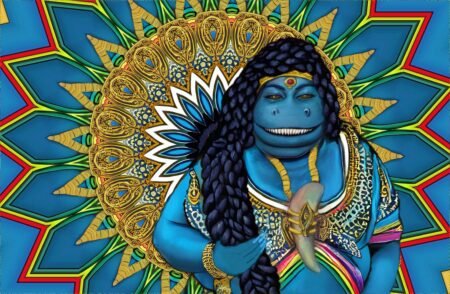Like any art, the images can also be healing. People spend time making strange AI pictures for the same reason they might paint on Sundays, or scribble in a journal, or shoot a video. They use the media to work out something in their own lives, something that can’t be said otherwise. I’ve seen images depicting what animal heaven might look like, created in response to the death of a beloved dog. Many images explore the representation of intangible, spiritual realms, presumably as a way to think about them. “A huge portion of the entire usage is basically art therapy,”
Source: What AI-Generated Art Really Means for Human Creativity | WIRED
This, in my opinion, is what makes AI art so useful. Its usefulness as a generator of art, in my opinion, is overhyped. It can however, be a great tool for people who are artists or whose artistic ability is hidden behind a lack of technical skill or physical ability.
Producing visual art by hand is a craft. It requires hand-eye coordination, fine motor skills, and some degree of mobility that has shut many disabled people out of the art world until now. AI art gives people the ability to write or speak visual art into existence.
A friend of mine called this “the death of art” because “now anybody can produce well arranged images with no skill at all”, but they never actually used an AI art generator. When you actually sit down and use one of these apps or programs, you understand the limitations of a computer are very similar to the limits of a paintbrush. It is like the world’s best paintbrush with a massive collection of layout templates and stencils, but it has not actually been outside on a sunny day, been beaten, or lost a loved one, or loved someone for that matter.
Worse, if it is one of the unethical ones that has been trained on copyrighted/stolen images (which a human artist usually is but understands how to deviate enough from the original to stay legal, but a machine doesn’t) it is undoubtedly trained mostly on kitsch and popular images. So good luck depicting anyone or anything non “ideal” or “imperfect”, and does not appeal to American corporate capitalist tastes.
For this reason it seems those panicking the most are those producing kitsch and the type of art that does not require a classically trained or particularly imaginative person. These seem to have turned strangely elitist against disabled people who use it to reduce the number of small movements and strokes required to produce digital and graphic art, and are fetishizing holding a paintbrush in one’s mouth an the various rigs disabled artists use when we create conventional paintings and drawings. They want us to have to do the same thing to make a 720×200 banner ad.
So it can create a visual representation of just about anything you tell it to, but it will not really represent what the artist wants it to without the artist learning how to talk to the machine in a way that it will. So it requires the learning of a language to tell the paintbrush what and how you want it to paint.
Then after hours of negotiating with the machine to get an image or collection of images that may say what you want it to say, these must usually be adjusted to get them just right.
The Taueret project I did recently required a total of five hours and many many discarded images to come up with a few that I found accurate or artistically useful.
So even after hours of negotiating with the machine, and I am one of the most verbally precise people I know, still more hours of actual drawing was required to make them say what I wanted to say.
AI art is not the death of art. It is simply an art assistant. When it gets as good as it can get, the best it will be is another artist. It may be a very popular artist if it presents the most popular images, but it cannot replace the variety of artists or viewers. In fact, it brings out the artist in a greater variety of people: particularly the disabled who were shut out by the inaccessibility of other digital art tools.
I am very interested to see what there is out there, and hear the voices that have previously been ignored. If you do AI or AI assisted art, feel free to comment here. Share your links. Linked comments will be moderated, but I will open them as soon as possible.
Thank you for reading.










